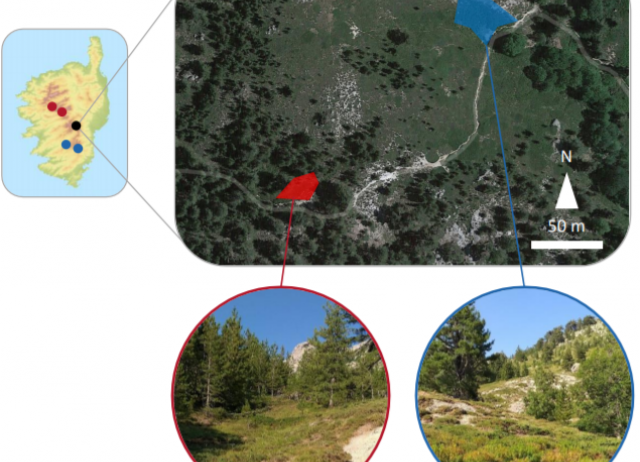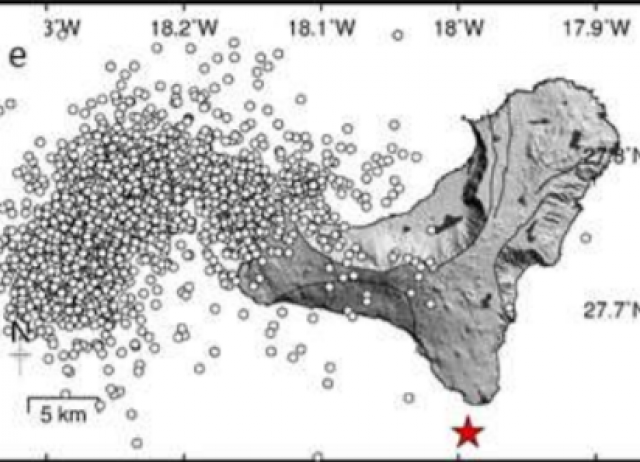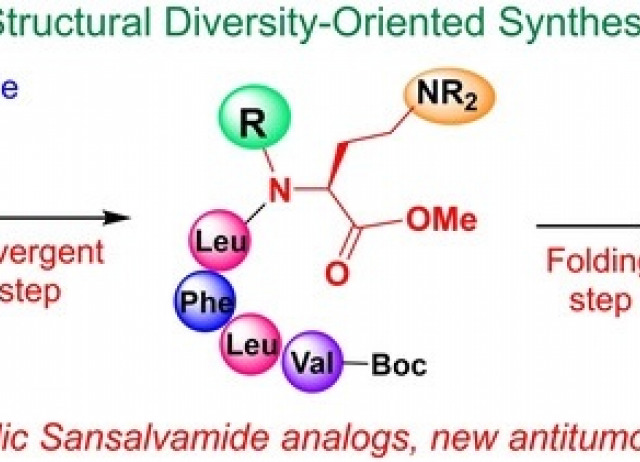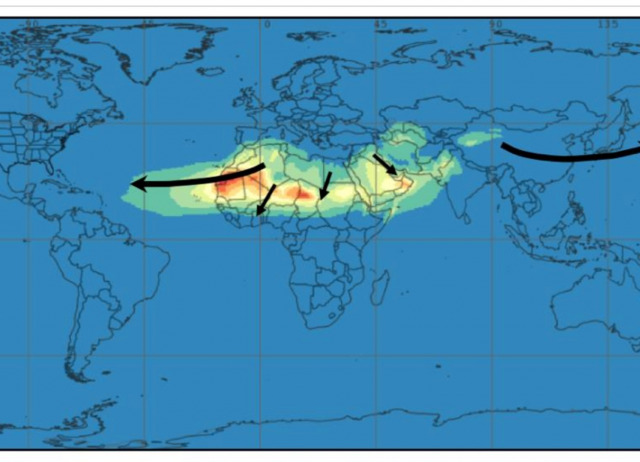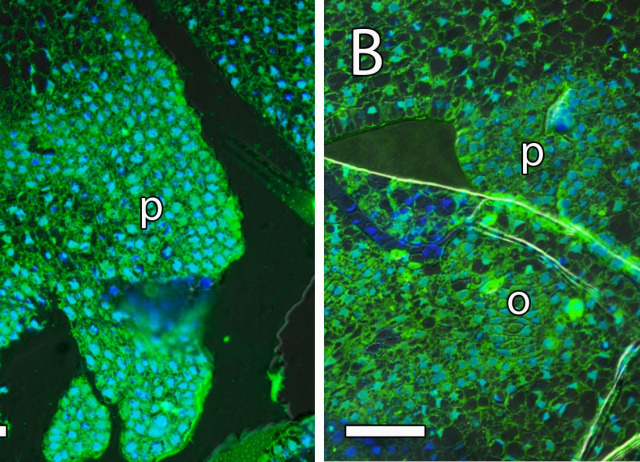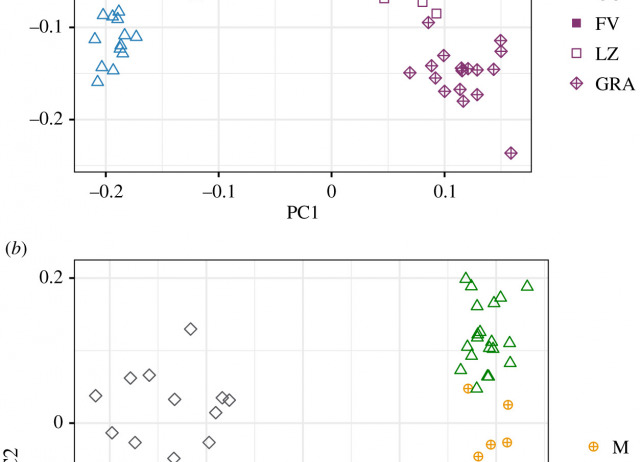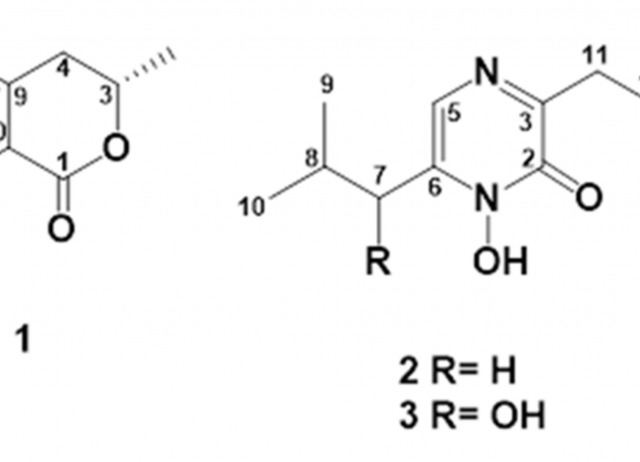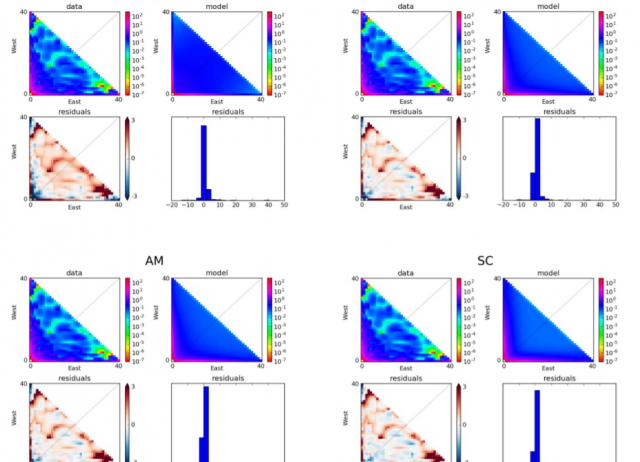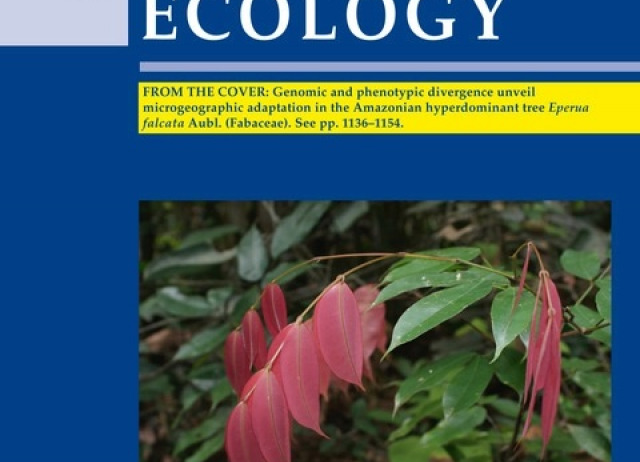
Sharing and Reporting Benefits from Biodiversity Research
The most remarkable feature of our planet is the diversity of its life forms, ranging from viruses and nanobacteria to blue whales and giant sequoias to satanic leaf‐tailed geckos and leafy seadragons (look them up!). Life is found in essentially all environments on earth, and the number of species living on our planet is many times greater than we could have imagined a century ago. A well‐regarded estimate pegs the number of eukaryotic species on earth at 8.7 million (±1.3 million), of which fewer than 15% are currently described (Mora et al., 2011). The diversity of prokaryotes is less clear (and highly controversial), but an analysis of 1.6 billion 16S ribosomal RNA sequences estimated that 0.8–1.6 million prokaryotic operational taxonomic units exist globally (Louca et al., 2019). While we do not know how many species are currently extant, or have existed in the past, we do know that this biodiversity is valuable, providing food, fibre and medicine, furnishing ecosystem services such as water and air purification, nutrient cycling, pollination and carbon uptake, and contributing to technological innovations ranging from biotechnology to robotics to material science. Moreover, biodiversity underlies the cultural identity of human populations and is important to human health and well‐being. Geographically, species richness increases from the Polar Regions to the tropics in terrestrial and surface marine ecosystems. Thus, some countries, especially those in tropical and subtropical regions, are endowed with much greater biodiversity than others. Unfortunately, benefits arising from the access and utilization of this biodiversity have been unequally shared, with (paradoxically) biodiversity‐poor countries often accruing the lion's share of economic gains. There can be imbalances within countries as well, wherein some segments of the population obtain greater economic benefits from biodiversity and associated traditional knowledge than indigenous peoples. The “Nagoya Protocol on Access to Genetic Resources and the Fair and Equitable Sharing of Benefits Arising from their Utilization,” which came into force in 2014, is an international agreement designed to ensure that the benefits arising from biodiversity are shared equitably (https://www.cbd.int/abs/). However, few scientific journals require compliance with the Nagoya Protocol or the reporting of benefits from biodiversity research. In this editorial, we (the editors of Molecular Ecology and Molecular Ecology Resources) express support for the Nagoya Protocol and the principle of benefit sharing. We believe that scientific journals publishing research on biodiversity can play an important role in implementing the Nagoya Protocol and in reporting on benefits generated from such research. Below, we provide background on the Nagoya Protocol, discuss the kinds of benefits that may arise from biodiversity research, describe the rationale for reporting on these benefits and introduce changes to the journals’ Data Accessibility Statements to incorporate the requirements and goals of the Nagoya Protocol.
Marden, Emily; Abbott, Richard J.; Austerlitz, Frédéric; Ortiz Barrientos, Daniel; Baucom, Regina S.; Bongaerts, Pim; Bonin, Aurélie; Bonneaud, Camille; Browne, Luke; Buerkle, C. Alex; Caicedo, Ana L.; Coltman, David W.; Cruzan, Mitchell B.; Davison, Angus; DeWoody, J. Andrew; Dumbrell, Alex J.; Emerson, Brent C.; Fountain-Jones, Nicholas M.; Gillespie, Rosemary; Giraud, Tatiana; Hansen, Michael M.; Hodgins, Kathryn A.; Heuertz, Myriam; Hirase, Shotaro; Hooper, Rebecca; Hohenlohe, Paul; Kane, Nolan C.; Kelley, Joanna L.; Kinziger, Andrew P.; McKenzie, Valerie J.; Moreau, Corrie S.; Nazareno, Alison G.; Pelletier, Tara A.; Pemberton, Josephine M.; Qu, Yanhua; Renaut, Sébastien; Riginos, Cynthia; Rodríguez-Ezpeleta, Naiara; Rogers, Sean M.; Russell, Jacob A.; Schoville, Sean D.; Shi, Suhua; Smith, Megan; Sork, Victoria L.; Stone, Graham N.; Taberlet, Pierre; Videvall, Elin; Waits, Lisette; Warschefsky, Emily; Wayne, Robert K.; Whibley, Annabel; Willoughby, Janna; Yoder, Jeremy B.; Zinger, Lucie; Sibbett, Benjamin; Narum, Shawn; Rieseberg, Loren H.
Demographic consequences of dispersal‐related trait shift in two recently diverged taxa of montane grasshoppers
Although the pervasiveness of intraspecific wing‐size polymorphism and transitions to flightlessness have long captivated biologists, the demographic outcomes of shifts in dispersal ability are not yet well understood and have been seldom studied at early stages of diversification. Here, we use genomic data to infer the consequences of dispersal‐related trait variation in the taxonomically controversial short‐winged (Chorthippus corsicus corsicus) and long‐winged (Chorthippus corsicus pascuorum) Corsican grasshoppers. Our analyses revealed lack of contemporary hybridization between sympatric long‐ and short‐winged forms and phylogenomic reconstructions supported their taxonomic distinctiveness, rejecting the hypothesis of intraspecific wing polymorphism. Statistical evaluation of alternative models of speciation strongly supported a scenario of Pleistocene divergence (<1.5 Ma) with ancestral gene flow. According to neutral expectations from differences in dispersal capacity, historical effective migration rates from the long‐ to the short‐winged taxon were threefold higher than in the opposite direction. Although populations of the two taxa present a marked genetic structure and have experienced parallel demographic histories, our coalescent‐based analyses suggest that reduced dispersal has fueled diversification in the short‐winged C. c. corsicus. Collectively, our study illustrates how dispersal reduction can speed up geographical diversification and increase the opportunity for allopatric speciation in topographically complex landscapes.
Ortego, Joaquín; Gutiérrez-Rodríguez, Jorge; Noguerales, Víctor
Tidal Influence on Seismic Activity During the 2011–2013 El Hierro Volcanic Unrest
The El Hierro volcanic unrest started in July 2011, with an increase in observed seismicity rates and surface deformation. After the initial onset, hypocenters migrated southward through September 2011, culminating in a submarine eruption beginning on October 10, 2011 and finishing in February 2012. The seismic activity continued, with remarkable periods of unrest through 2012 and 2013. The most significant episodes of seismic activity during this unrest are related to magma migration at depth. In this work, we compute tidal stress for each earthquake, at its hypocenter depth, and assign them a tidal stress phase angle. We have found statistically significant correlations between the occurrence of earthquakes and tidal stress phase angles, corresponding mainly to increasing tidal stress change rates. We found primarily that the magnitude of vertical and E‐W horizontal tidal stress values and their changing rates with time were correlated with earthquake occurrence times. We also found that there is no correlation between tides and seismicity at times with no observed surface displacements, suggesting that tidal modulation might be related to overpressure during migration of magma. Tidal modulation changes with depth and the influence of ocean‐loading tides is stronger than the influence of solid Earth tides. Our results support the hypothesis that tidal stress may modulate the seismicity during volcanic unrest, particularly during shallow depth magma migration.
Miguelsanz, Luis; González, Pablo J.; Tiampo, Kristy F.; Fernández Torres, José
Flightlessness in insects enhances diversification and determines assemblage structure across whole communities
Dispersal limitation has been recurrently suggested to shape both macroecological patterns and microevolutionary processes within invertebrates. However, because of potential interactions among biological, environmental, temporal, and spatial variables, causal links among flight-related traits, diversification and spatial patterns of community assembly remain elusive. Integrating genetic variation within species across whole insect assemblages, within a simplified spatial and environmental framework, can be used to reduce the impact of these potentially confounding variables. Here, we used standardized sampling and mitochondrial DNA sequencing for a whole-community characterization of the beetle fauna inhabiting a singular forested habitat (laurel forest) within an oceanic archipelago setting (Canary Islands). The spatial structure of species assemblages together with species-level genetic diversity was compared at the archipelago and island scales for 104 winged and 110 wingless beetle lineages. We found that wingless beetle lineages have: (i) smaller range sizes at the archipelago scale, (ii) lower representation in younger island communities, (iii) stronger population genetic structure, and (iv) greater spatial structuring of species assemblages between and within islands. Our results reveal that dispersal limitation is a fundamental trait driving diversity patterns at multiple hierarchical levels by promoting spatial diversification and affecting the spatial configuration of entire assemblages at both island and archipelago scales.
Salces-Castellano, Antonia; Andújar, Carmelo; López, Heriberto; Pérez-Delgado, Antonio J.; Arribas, Paula; Emerson, Brent C.
Structural Diversity using Hyp “Customizable Units”: Proof‐of‐Concept Synthesis of Sansalvamide‐Related Antitumoral Peptides
The potential of “customizable units” to generate structural diversity for biological screenings is highlighted in this proof‐of‐concept synthesis of new peptides related to the potent antitumoral Sansalvamide A. Using L‐4‐hydroxyproline (Hyp) as a customizable unit in a linear parent peptide, an improved procedure for selective peptide modification was developed. A divergent Hyp scission‐reductive amination process was carried out, affording five linear peptides with cationic residues, and notably, an N‐alkyl moiety that affected the conformation of the peptide. After two steps (saponification and macrocyclization), sixteen differently N1‐substituted linear and cyclic peptides were obtained. For the first time, the activity of the linear and cyclic compounds was compared. Not only some linear analogs but also cyclic compounds with scarcely studied cationic residues were active against MCF7 breast cancer line. Thus, the structural diversity generated from customizable units can be valuable in drug discovery.
Cuevas, Fernando; Saavedra, Carlos J.; Romero-Estudillo, Iván; Boto, Alicia; Ordóñez, Mario; Vergara, Irene
Impact of Desert Dust Events on the Cardiovascular Disease: A Systematic Review and Meta-Analysis
Background: Whether or not inhalation of airborne desert dust has adverse health effects is unknown. The present study, based on a systematic review and meta-analysis, was carried out to assess the influence desert dust on cardiovascular mortality, acute coronary syndrome, and heart failure. Methods: A systematic search was made in PubMed and Embase databases for studies published before March 2020. Studies based on daily measurements of desert dust were identified. The meta-analysis evaluated the impact of desert dust on cardiovascular events the same day (lag 0) of the exposure and during several days after the exposure (lags 1 to 5). The combined impact of several days of exposure was also evaluated. The incidence rate ratio (IRR) with 95% confidence intervals (CI) was calculated using the inverse variance random effects method. Results: Of the 589 identified titles, a total of 15 studies were selected. The impact of desert dust on the incidence of cardiovascular mortality was statistically significant (IRR = 1.018 (95%CI 1.008–1.027); p < 0.001) in lag 0 of the dust episode, in the following day (lag 1) (IRR = 1.005 (95%CI 1.001–1.009); p = 0.022), and during both days combined (lag 0–1) (IRR = 1.015 (95%CI 1.003–1.028); p = 0.014). Conclusions: The inhalation to desert dust results in a 2% increase (for every 10 µg/m3) in cardiovascular mortality risk.
Domínguez-Rodríguez, Alberto; Báez-Ferrer, Néstor; Abreu-González, Pedro; Rodríguez, Sergio; Díaz, Rocío; Avanzas, Pablo; Hernández-Vaquero, Daniel
Ovary Signals for Pollen Tube Guidance in Chalazogamous Mangifera indica L.
Most flowering plants show porogamy in which the pollen tubes reach the egg apparatus through the micropyle. However, several species show chalazogamy, an unusual pollen tube growth, in which the pollen tubes reach the embryo sac through the chalaza. While ovary signals for pollen tube growth and guidance have been extensively studied in porogamous species, few studies have addressed the process in chalazogamous species such as mango (Mangifera indica L.), one of the five most important fruit crops worldwide in terms of production. In this study, we characterize pollen–pistil interaction in mango, paying special attention to three key players known to be involved in the directional pollen tube growth of porogamous species such as starch, arabinogalactan proteins (AGPs), and γ-aminobutyric acid (GABA). Starch grains were observed in the style and in the ponticulus at anthesis, but their number decreased 1 day after anthesis. AGPs, revealed by JIM8 and JIM13 antibodies, were homogenously observed in the style and ovary, but were more conspicuous in the nucellus around the egg apparatus. GABA, revealed by anti-GABA antibodies, was specifically observed in the transmitting tissue, including the ponticulus. Moreover, GABA was shown to stimulate in vitro mango pollen tube elongation. The results support the heterotrophic growth of mango pollen tubes in the style at the expense of starch, similarly to the observations in porogamous species. However, unlike porogamous species, the micropyle of mango does not show high levels of GABA and starch, although they were observed in the ponticulus and could play a role in supporting the unusual pollen tube growth in chalazogamous species.
Lora Cabrera, Jorge; Pérez Méndez, Verónica; Herrero Romero, María; Hormaza Urroz, José Ignacio
Genomic variation, population history and within-archipelago adaptation between island bird populations
Oceanic island archipelagos provide excellent models to understand evolutionary processes. Colonization events and gene flow can interact with selection to shape genetic variation at different spatial scales. Landscape-scale variation in biotic and abiotic factors may drive fine-scale selection within islands, while long-term evolutionary processes may drive divergence between distantly related populations. Here, we examine patterns of population history and selection between recently diverged populations of the Berthelot's pipit (Anthus berthelotii), a passerine endemic to three North Atlantic archipelagos. First, we use demographic trees and f3 statistics to show that genome-wide divergence across the species range is largely shaped by colonization and bottlenecks, with evidence of very weak gene flow between populations. Then, using a genome scan approach, we identify signatures of divergent selection within archipelagos at single nucleotide polymorphisms (SNPs) in genes potentially associated with craniofacial development and DNA repair. We did not detect within-archipelago selection at the same SNPs as were detected previously at broader spatial scales between archipelagos, but did identify signatures of selection at loci associated with similar biological functions. These findings suggest that similar ecological factors may repeatedly drive selection between recently separated populations, as well as at broad spatial scales across varied landscapes.
Martín, Clauida A.; Armstrong, Claire; Illera, Juan Carlos ; Emerson, Brent C. ; Richardson, David S.; Spurgin, Lewis G.
Bioactive Metabolites from the Endophytic Fungus Aspergillus sp. SPH2
In the current study, an ethyl acetate extract from the endophytic fungus Aspergillus sp. SPH2 isolated from the stem parts of the endemic plant Bethencourtia palmensis was screened for its biocontrol properties against plant pathogens (Fusarium moniliforme, Alternaria alternata, and Botrytis cinerea), insect pests (Spodoptera littoralis, Myzus persicae, Rhopalosiphum padi), plant parasites (Meloidogyne javanica), and ticks (Hyalomma lusitanicum). SPH2 gave extracts with strong fungicidal and ixodicidal effects at different fermentation times. The bioguided isolation of these extracts gave compounds 1–3. Mellein (1) showed strong ixodicidal effects and was also fungicidal. This is the first report on the ixodicidal effects of 1. Neoaspergillic acid (2) showed potent antifungal effects. Compound 2 appeared during the exponential phase of the fungal growth while neohydroxyaspergillic acid (3) appeared during the stationary phase, suggesting that 2 is the biosynthetic precursor of 3. The mycotoxin ochratoxin A was not detected under the fermentation conditions used in this work. Therefore, SPH2 could be a potential biotechnological tool for the production of ixodicidal extracts rich in mellein.
Morales-Sánchez, Viridiana; Díaz, Carmen E.; Trujillo, Elena; Olmeda, Sonia A.; Valcarcel, Félix; Muñoz, Rubén; Andrés, María Fe; González-Coloma, Azucena
Long‐term cloud forest response to climate warming revealed by insect speciation history
Montane cloud forests are areas of high endemism, and are one of the more vulnerable terrestrial ecosystems to climate change. Thus, understanding how they both contribute to the generation of biodiversity, and will respond to ongoing climate change, are important and related challenges. The widely accepted model for montane cloud forest dynamics involves upslope forcing of their range limits with global climate warming. However, limited climate data provides some support for an alternative model, where range limits are forced downslope with climate warming. Testing between these two models is challenging, due to the inherent limitations of climate and pollen records. We overcome this with an alternative source of historical information, testing between competing model predictions using genomic data and demographic analyses for a species of beetle tightly associated to an oceanic island cloud forest. Results unequivocally support the alternative model: populations that were isolated at higher elevation peaks during the Last Glacial Maximum are now in contact and hybridizing at lower elevations. Our results suggest that genomic data are a rich source of information to further understand how montane cloud forest biodiversity originates, and how it is likely to be impacted by ongoing climate change.
Salces-Castellano, Antonia; Stankowski, Sean; Arribas, Paula; Patiño, Jairo; Karger, Dirk N.; Butlin, Roger; Emerson, Brent C.
